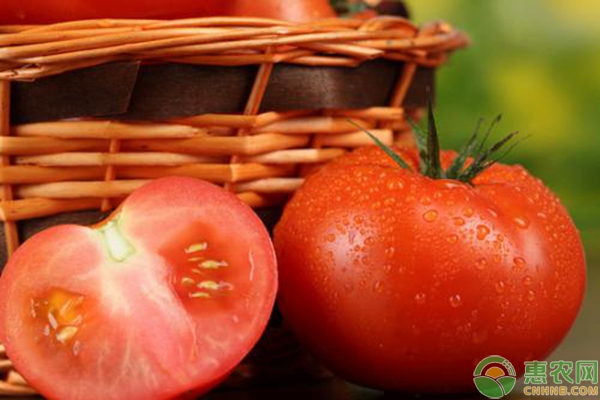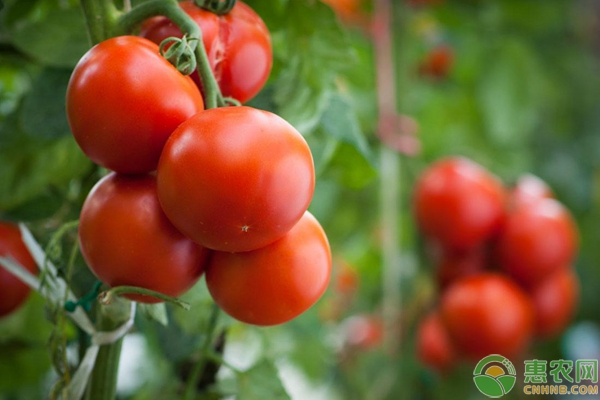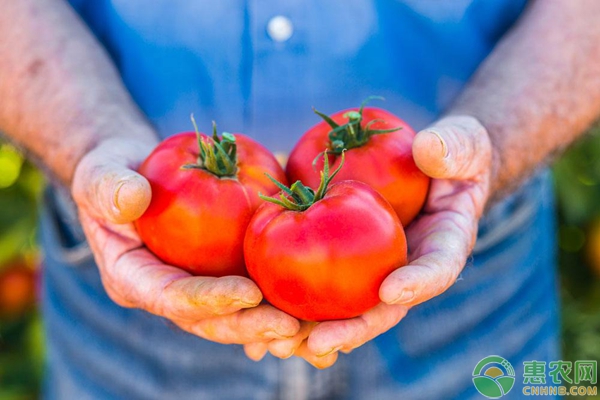Tomorrow is the frost, the temperature is also falling and falling, which is more unfavorable for greenhouse tomato cultivation. Therefore, we must pay attention to the two diseases of greenhouse tomatoes at this time! One is rot and the other is poor color. The following is a small series of Huinong. I will talk about the causes and prevention measures of common diseases in greenhouses. First, the rot disease Tomato rot is not unfamiliar to the growers who grow tomatoes. The disease is mainly harmful to the fruit. Symptoms are the flesh near the peel and the vascular bundles in the ventricles of the ventricle. The vascular bundles become brown and necrotic. Gray spots, the fruit does not rot, especially on the green fruit; after the fruit is cut, there is a black rib inside. Once the rot disease occurs, it has a serious impact on the quality of the fruit. So what is the cause and how to prevent it? 1, the cause analysis Tomato rot disease is a physiological disease, which occurs for a variety of reasons, such as imbalance of nitrogen, phosphorus and potassium ratios (partial application of nitrogen fertilizer, potassium deficiency, boron deficiency, especially when ammonium nitrogen is too much, it will cause carbohydrates The ratio of nitrogen to nitrogen decreases, causing abnormal metabolism of the plant, leading to lignification of the vascular bundle and induction of rot disease; Insufficient illumination and low temperature (long-term low-temperature oligo, high-humidity or high night temperature will lead to insufficient carbohydrates in tomato plants, coupled with the low temperature of tomato, the tomato roots have poor absorption of soil nutrients, resulting in poor Photosynthetic product accumulation is adversely affected and prone to rot disease); In addition, soil compaction, poor gas permeability (soil viscosity, poor gas permeability, hinder the absorption of roots, causing imbalance of nutrients in the plant, hindering the absorption and transfer of iron, causing the fruit to turn yellow and white, induce gluten.) The occurrence of rot. 2, preventive measures 1. Nitrogen and potassium increase: reduce the application of nitrogen fertilizer, especially ammonium nitrogen fertilizer. In the autumn and winter, the temperature is low, and the ammonium nitrogen excess is not only prone to ammonium poisoning, affecting root growth, but also inhibiting the absorption of potassium. Therefore, when applying water soluble fertilizer in autumn and winter, it is best to use water soluble fertilizer with high nitrate content. 2. Increase the lighting of the greenhouse: the tomato coloring period needs sufficient illumination, and the increase of illumination requires two aspects at the same time. First, the shed film is often wiped, or the dust cloth is added to increase the transparency of the shed film; Appropriate leaf picking increases the ventilation and light transmission between the plants, but the leaves should be moderately selected. The leaves in the upper part of the fruit are “more than not crowdedâ€, and the lower part of the fruit should leave 3-4 leaves according to the growth, so that it will not affect the fruit expansion, and Does not cause the blade to block and affect the color change. 3. Foliar spray fertilizer: Fruits that have developed rot disease should be removed in time to avoid nutrient waste. At the same time, foliar fertilizer containing trace elements such as boron and iron should be sprayed on the foliage to prevent the occurrence of tendon rot; or spraying dihydrogen phosphate Potassium, reduce or avoid the occurrence of subsequent tendon fruit. 4. Improve the soil: At present, avoid the mulch film close to the ground and avoid covering the mulch in the whole shed. Add organic fertilizer and microbial agents to promote the formation of soil aggregate structure and improve soil permeability. When the soil moisture content is large, the oxygen content is reduced, and the root activity is seriously affected, which in turn affects the absorption and transportation of nutrient elements, which is easy to cause tendon and fruit. Therefore, in autumn and winter, attention should be paid to pouring small water to avoid flooding. In addition, enhance soil permeability. At present, avoid the film covering the ground and avoid covering the mulch in the whole shed. Before changing the soil, the organic fertilizer can be added to the sticky soil, and the microbial agent can be supplemented in time to promote the formation of soil aggregate structure and increase the gas permeability. Second, poor color change Whether the tomato can change color normally has a great influence on the quality of the fruit. If the fruit turns poorly, the phenomenon of flowering fruit and green fruit will appear, and the commerciality is greatly reduced. 1, the cause analysis There are many reasons for affecting the color change of tomato fruits, such as low temperature, weak light, improper management of water and fertilizer, etc., which affect the formation of lycopene, thereby restricting the normal color change of tomato fruits. 2, preventive measures 1. Regulate the warm light: Tomato coloring is mainly lycopene. It is understood that the optimal temperature for lycopene formation is 19 °C - 24 °C, and the shed temperature below 14 °C or higher than 32 °C will affect the tomato. Normal production of erythropoietin. Therefore, during the period when the tomatoes enter the color change, the vegetable farmers should adjust the temperature of the shed at 22 ° C to 26 ° C during the day and 15 ° C to 20 ° C during the night. Light also has a greater impact on the conversion of lycopene. When there is insufficient light in the cloudy sky, the vegetable grower can improve the coloring efficiency of the fruit by installing a fill light and hanging a reflective curtain. Of course, it is also necessary to ensure that the shed film has sufficient light transmittance, especially in the shed near the roadside. The vegetable farmers should often wipe the shed film or use the dust cloth strip to increase the transparency of the shed film and promote the coloration of the fruit; When it is relatively closed, the ventilation and light transmittance are poor, and the coloring of the middle and lower fruits is often unfavorable. Therefore, reasonable pruning and leafing to ensure permeability is an important measure to promote tomato color change. 2. Strengthening the management of fertilizer and water: After the tomato enters the color-changing period, fertilization is also an important factor affecting the color change of the fruit. For example, if more nitrogen fertilizer is used, the color of the fruit is slow, and the green shoulder fruit is easy to form; when the supply of boron is insufficient, the shoulder remains. Green and necrotic spots, the fruit of the imbalance of nutrient supply will appear in the face. Therefore, it is recommended that vegetable farmers use fertilizer reasonably, é«™K-type and high-nitrogen type alternately, and at the same time, foliar application of trace element foliar fertilizer, maintain good leaves, improve peel flexibility and coloration, and promote fruit color change and quality improvement. . In addition, we recommend several small tomato varieties with great characteristics, and hope to lead everyone to the path of becoming rich! 1, Qianfang Pink Thousands of pink extra early maturity, limited growth, fruit type. The plants are thicker and thicker, with many more tidbits and more fruit. The average fruit is 193, and the fruit weight is about 20 grams. The fruit is nearly round, the immature fruit is pink, the ripe fruit is pink, the fruit is bright, and the storage is resistant. The meat is thick, the sweetness is high, the vitamin C content is high, the acid taste is not high, and the quality is high. 2, red girl sweet fruit Red girl sweet fruit is very early, limited growth, fruit type. The stems and leaves of the plants are fine, the flowers are many, the fruit is more, the maximum number of fruit is 50, the average fruit is 190, the fruit weight is about 20 grams; the fruit is oval, the fruit is red, the fruit is bright, and the storage is resistant. The meat is thick, the sweetness is high, the vitamin C content is high, the acid taste is not high, and the quality is high. 3, Mimi Golden Fruit Mimi Jinguo special early maturing, limited growth, fruit type. The stems and leaves of the plants are fine, the flowers are many, the fruit is more, the average fruit is 218, the fruit weight is about 15 grams; the fruit is oval, the color is golden, especially bright, resistant to storage and transportation; in the detection of dozens of fruit tomatoes It has the highest sweetness and vitamin C content, no sour taste and high quality. 4, North American purple North American purple is derived from Canada, precocious, limited growth, fruit type. The plants are thick and strong, the leaves are large, the weight of single fruit is about 50 grams, and the average fruit is 78. The fruit is purple when it matures. It is purple after full ripening. It has a red and purple feeling. It is gorgeous and attractive, and the fruit is purple. The fuchsia can be eaten fresh and has different flavors, which is particularly attractive in sightseeing picking gardens. Food Grade Gelatin,Food Additives Gelatin,Bovine Gelatin Powder,Edible Gelatin Powder Hebei Haodong Biological Technology Co.,Ltd. , https://www.hdgelatin.com

